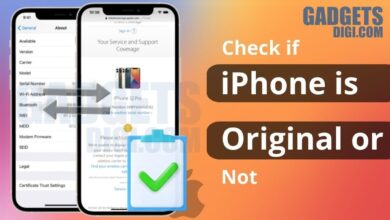
The “secret code” in WhatsApp isn’t a singular hidden feature but rather a variety of security and privacy mechanisms that make the app highly secure for its users. WhatsApp, being one of the most popular messaging apps in the world, incorporates numerous advanced technologies and features to safeguard communications. To explain the concept of WhatsApp’s “secret code,” we must dive into several key aspects related to encryption, security protocols, and privacy features. These include end-to-end encryption, verification codes, security notifications, and more. Let’s break down these elements and what they mean for users of the platform.
End-to-End Encryption – The Heart of WhatsApp Security
The primary “secret code” that WhatsApp uses to protect your conversations is **end-to-end encryption** (E2EE). This means that messages sent via WhatsApp are encrypted from the moment they leave your device until they reach the recipient’s device. During transmission, these messages can’t be read by any third party, not even WhatsApp itself.
Technically, WhatsApp uses the **Signal Protocol** to implement this encryption. This protocol generates a pair of cryptographic keys – a public key and a private key. When you send a message, your app locks (encrypts) it using the recipient’s public key. Only the recipient’s private key can unlock (decrypt) the message, meaning that the conversation is protected from anyone trying to intercept it. Since the decryption keys are stored on users’ devices, not on WhatsApp’s servers, this system ensures that neither WhatsApp nor any third-party can read your chats.
The same encryption applies to various forms of communication on WhatsApp – whether you’re sending text, voice notes, photos, videos, or even making calls. It’s this end-to-end encryption that makes WhatsApp so secure and why it’s often referred to as the “secret code” that underpins the app.
The Encryption Verification Code
A specific “secret code” related to WhatsApp encryption is the **security code** that you can verify with your contacts. Every chat between two users has a unique security code that can be manually verified. This code is essentially a cryptographic key generated for your conversation with another user. To access it, you go to the contact’s info and select “Encryption.”
Verifying the code ensures that your conversation is truly encrypted and has not been tampered with. If someone else tries to intercept the communication by pretending to be you or the other party (a man-in-the-middle attack), the security code won’t match when you try to verify it, and this serves as a signal that something is wrong.
Although most people don’t verify these codes manually, this process ensures a layer of transparency and additional security. If you’re looking for a way to ensure the integrity of your encrypted conversation, verifying this “secret code” with your contact can give you peace of mind.
Two-Step Verification – Another Layer of Protection
Another important “code” in WhatsApp is related to **two-step verification**. This feature adds an extra layer of security to your account by requiring a PIN code whenever you try to register your phone number with WhatsApp on a new device. You can activate this by going to Settings > Account > Two-step verification.
Once you enable two-step verification, you set a six-digit PIN. This is your personal “secret code” that only you know. If someone tries to register your phone number on a different device, they won’t be able to complete the registration without entering this code. This significantly reduces the risk of unauthorized access, even if someone gets hold of your SIM card or phone number.
WhatsApp will occasionally ask you to enter this PIN during regular use to ensure that you haven’t forgotten it. In addition, you can also associate an email address with your account to reset the PIN if you forget it.
Backup Encryption – A New Layer of Security for Backups
Until recently, the one major gap in WhatsApp’s security was its backups. While the app used end-to-end encryption for messages, media, and calls, backups stored in Google Drive or iCloud were not encrypted in the same way, leaving them vulnerable if someone gained access to your cloud storage account. However, WhatsApp addressed this by introducing **end-to-end encrypted backups**.
When you enable this feature, you can create a password or use a 64-digit encryption key to secure your backup. This password or encryption key acts as a “secret code” that locks your backups. Without the password or key, no one (including WhatsApp) can access your backup, even if they get access to your cloud storage. This ensures that your message history is just as secure as your active chats.
Disappearing Messages – Self-Destructing Conversations
Another fascinating feature that might be viewed as a “secret code” in WhatsApp is **disappearing messages**. This option allows you to set a timer for your messages, after which they automatically disappear from the conversation. You can choose time intervals like 24 hours, 7 days, or 90 days.
Although the messages are encrypted during transmission, the idea of disappearing messages provides additional privacy, especially if you’re discussing sensitive topics and don’t want the message history to linger. Enabling this feature adds another layer of control over the lifespan of your conversations.
WhatsApp Web – Device Linking and Security Codes
WhatsApp also provides the ability to use the app on a desktop via WhatsApp Web. When you link your phone to a computer using WhatsApp Web, the app generates a QR code, which you scan from your phone to establish the connection. This QR code is another form of a “secret code” that ensures only the devices you authorize are connected to your WhatsApp account.
Once connected, all your messages remain encrypted, and any action taken on WhatsApp Web reflects on your phone app. WhatsApp also regularly logs you out from the Web version to ensure security, and you can manually disconnect from all active sessions via your phone’s app.
Security Notifications
Finally, WhatsApp sends **security notifications** whenever a contact’s security code changes. This can happen if they reinstall WhatsApp, change their phone, or transfer their account to another device. Receiving this notification doesn’t necessarily mean that something is wrong, but it serves as a prompt for you to re-verify the security code if you wish.
These notifications ensure that both parties in a conversation are aware of any significant changes, adding another layer of transparency to the encryption process.
Conclusion
WhatsApp’s “secret code” is essentially the combination of various encryption and security protocols that protect user data. End-to-end encryption is the cornerstone of WhatsApp’s security, ensuring that no one can intercept or read messages between users. Features like two-step verification, encryption verification codes, and encrypted backups provide additional layers of protection.
Although most of these processes happen behind the scenes, WhatsApp gives users several tools to actively manage their security, such as verifying encryption codes, enabling two-step verification, and securing backups with passwords. This mix of visible and invisible security measures ensures that WhatsApp remains one of the most secure messaging platforms available, effectively making its “secret code” an ongoing effort to protect user privacy in a highly connected digital world.




